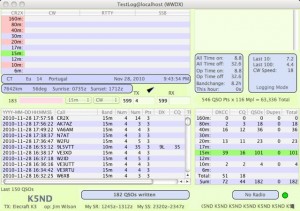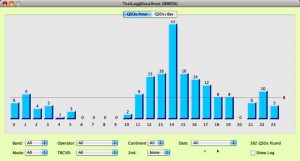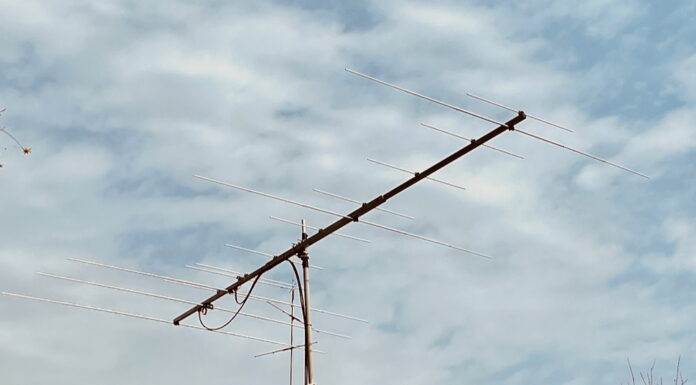I also prepared for this contest far more rigorously than others. On the equipment side, I constructed a Moxon beam antenna for 15 meters. It’s a temporary antenna, configured to be put in place only for a contest. I also put in place a special logging software designed just for contests. It interfaced to my transceiver and allowed the software to generate the CW, with occasional use of the key to fill in some missing item or to slow down the CW to help the other station copy the full message.
The logging software was RUMped developed for DL2RUM for Mac OS. It is specially focused on contest work and had a number of segments of the screen that really were helpful. In particular, it had a screen to keep track of my score. It also gave me information on each QSO as to how it contributed to the score. I enjoyed after the contest to look at the screen to showed the rate of my QSOs over each hour of the day. Here’s two screen shots:


The time scale on the QSO rate is UTC, which is six hours difference from Central Standard Time. You can pretty much determine that I was sleeping through the week hours of the morning.
My score, as you may be able to tell from the screen, was just over 63,000 points from 182 QSOs. That’s a record for me, but the contest winners are in the millions of points. One handicap, of course, is that I run with QRP power levels (5 watts or less) and my antenna farm is not quite up to the contesting standard. Still, the verticals and Moxon beam did pretty well. The next challenge is to get the operator better up to speed in terms of determining what band to be on at what time and to learn how to get through pile ups with skill and cunning. I also clearly need to do more of what’s call “running”. This is where you set up on a particular frequency and call “CQ” and the stations come to you. Unfortunately, none of the stations could hear me the couple of times I tried it. Instead, I did “search and pounce”, which is scanning the bands and working the stations that I find.
I guess that’s the exciting part of this radio sport or contesting activity, learning and growing as you compete. Another exciting thing is to work new DX countries. I snagged about 10 new countries during the contest that brought me up to 103 countries worked on QRP. So, I’ve been able to apply for ARRL QRP DXCC Award. Since this award doesn’t require QSL confirmation, I’ve sent in my application already. On the regular DXCC effort, I’m up to around 85 confirmed countries. Just a little ways to go there.
That’s my report from the CQ WW CW Contest. I hope to see you on the bands.








